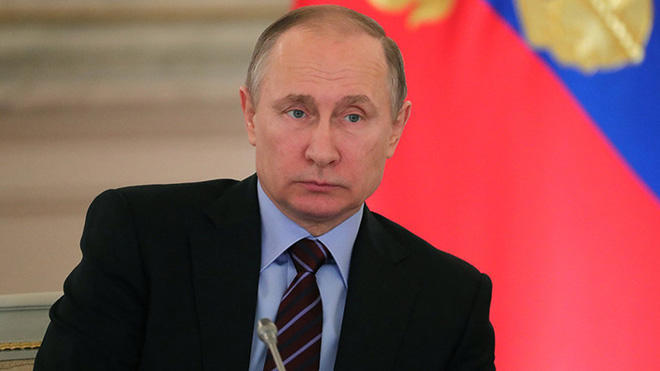Russia not to withdraw from INF treaty

By Kamila Aliyeva
The United States actually withdrew from the treaty on the elimination of intermediate-range and shorter-range missiles.
This was stated by Russian President Vladimir Putin at the press conference of the head of state in Moscow on December 14.
“We did not step out of the basic treaties - on ABM [Anti-Ballistic Missile Treaty], INF [Intermediate-Range Nuclear Forces Treaty]. Conditions are created and information and propaganda work is conducted for the U.S. withdrawal from the INF. In fact they already left it. They delivered anti-missile systems in Romania. They just removed them from the sea. These systems can easily be replaced with medium-range missiles. In fact, the process has started. But we are not stepping out from any of them. There are talks on the withdrawal from START III in the United States. If the U.S. unilaterally withdraws from it, it will be very bad from the point of view of international security,” the president said.
Russia will not be drawn into the arms race, according to Putin.
“We understand what these conversations can lead to [about the increase in the U.S. military budget]. We will be able to ensure our security without getting involved in the arms race. But we will pay attention to the development of the army and navy,” he added.
The military expenses are balanced by certain components, according to the head of state.
“Firstly, we need to ensure our security. Secondly, we need to do it such a way so that it wouldn’t lead to the collapse of our economics. For the following year, Russian military expenditures are envisaged in the amount of 1.4 trillion rubles for purchases and 1.4 trillion rubles for maintenance. This is approximately 2.8 percent of GDP. According to the current exchange rate, 2.8 trillion of rubles make around $46 billion,” he said.
The Russian president noted that in the U.S. the military expenditures for the next year are envisaged in the amount of $700 billion dollars.
When the Soviet Union officially dissolved in 1991, the newly-independent states of Belarus, Kazakhstan, and Ukraine inherited more than 3,000 strategic nuclear weapons, as well as at least 3,000 tactical or battlefield nuclear weapons.
The United States and Russia reached a solution to this complex problem by engaging Belarus, Kazakhstan, and Ukraine in a series of talks that led to the Lisbon Protocol. That agreement made all five states party to the 1991 Strategic Arms Reduction Treaty (START), which required Washington and Moscow to each cut their deployed strategic nuclear forces from approximately 10,000 warheads apiece to down below 6,000 warheads on no more than 1,600 ICBMs, submarine-launched ballistic missiles (SLBM), and long-range bombers.
The new START treaty signed in 2010 replaced the 1991 START I treaty and superseded the 2002 Strategic Offensive Reductions Treaty (SORT), which terminated when New START entered into force.
Recently, U.S. President Donald Trump has called New START, which was signed in 2010, “one-sided” and “a bad deal,” and has even suggested the U.S. might withdraw from it.
Negotiated between the United States and the Soviet Union as part of the Strategic Arms Limitation Talks, the now-defunct Anti-Ballistic Missile (ABM) treaty was signed on May 26, 1972 and entered into force on October 3, 1972. The treaty, from which the United States withdrew on June 13, 2002, barred Washington and Moscow from deploying nationwide defenses against strategic ballistic missiles. In the treaty preamble, the two sides asserted that effective limits on anti-missile systems would be a “substantial factor in curbing the race in strategic offensive arms.”
The Treaty Between the United States of America and the Union of Soviet Socialist Republics on the elimination of their intermediate-range and shorter-range missiles, commonly referred to as the INF (Intermediate-Range Nuclear Forces) treaty, requires destruction of the parties' ground-launched ballistic and cruise missiles with ranges of between 500 and 5,500 kilometers, their launchers and associated support structures and support equipment within three years after the treaty enters into force.
---
Kamila Aliyeva is AzerNews’ staff journalist, follow her on Twitter: @Kami_Aliyeva
Follow us on Twitter @AzerNewsAz
